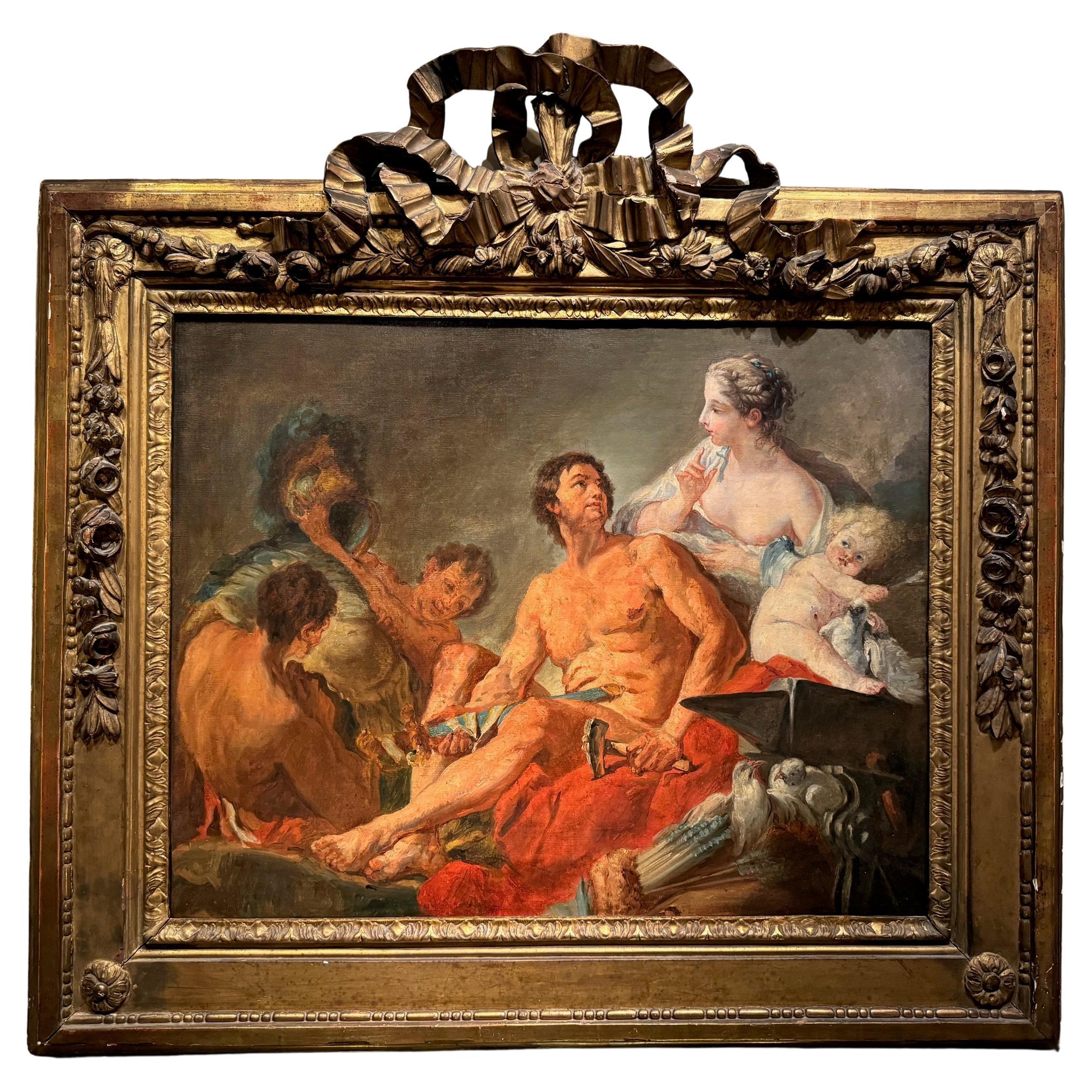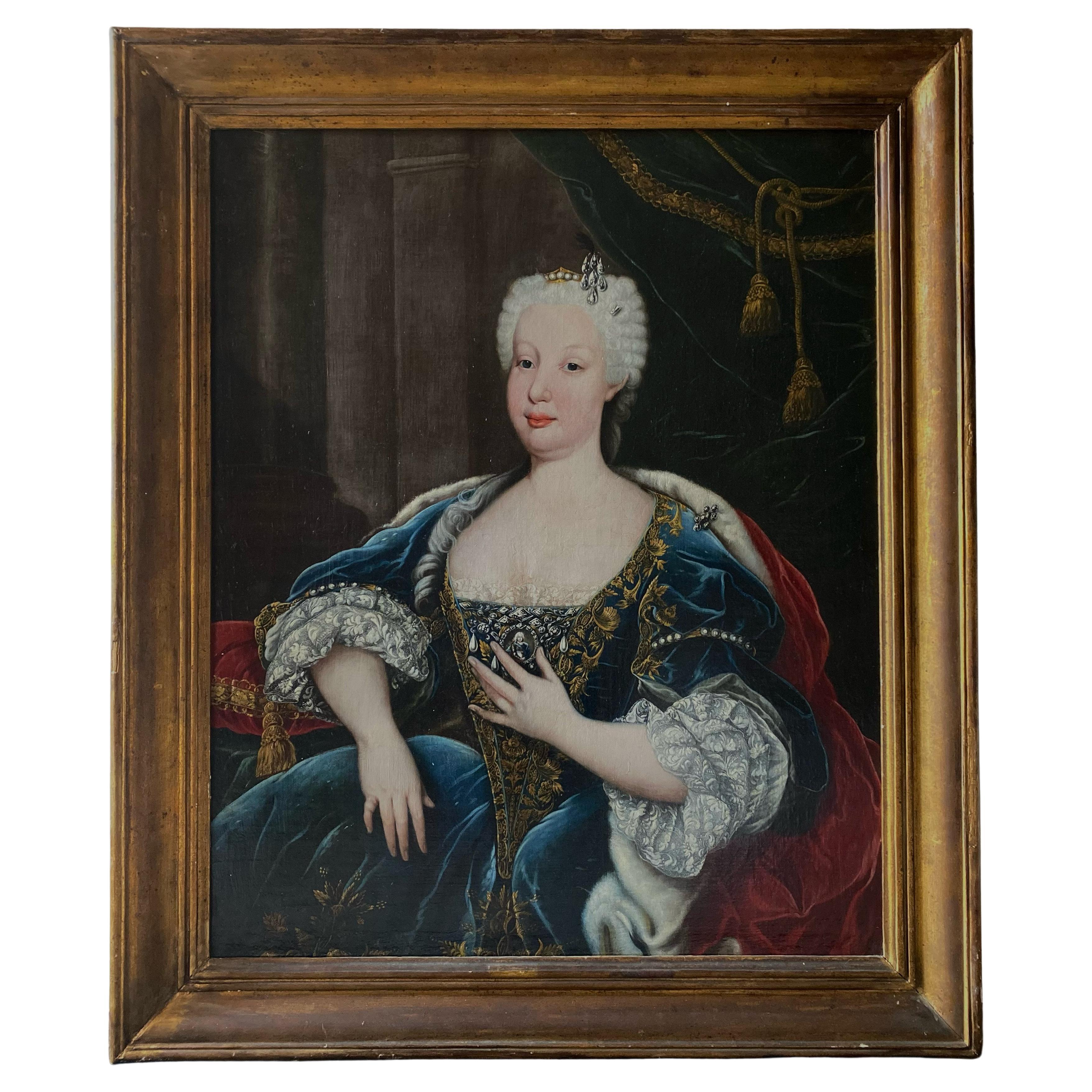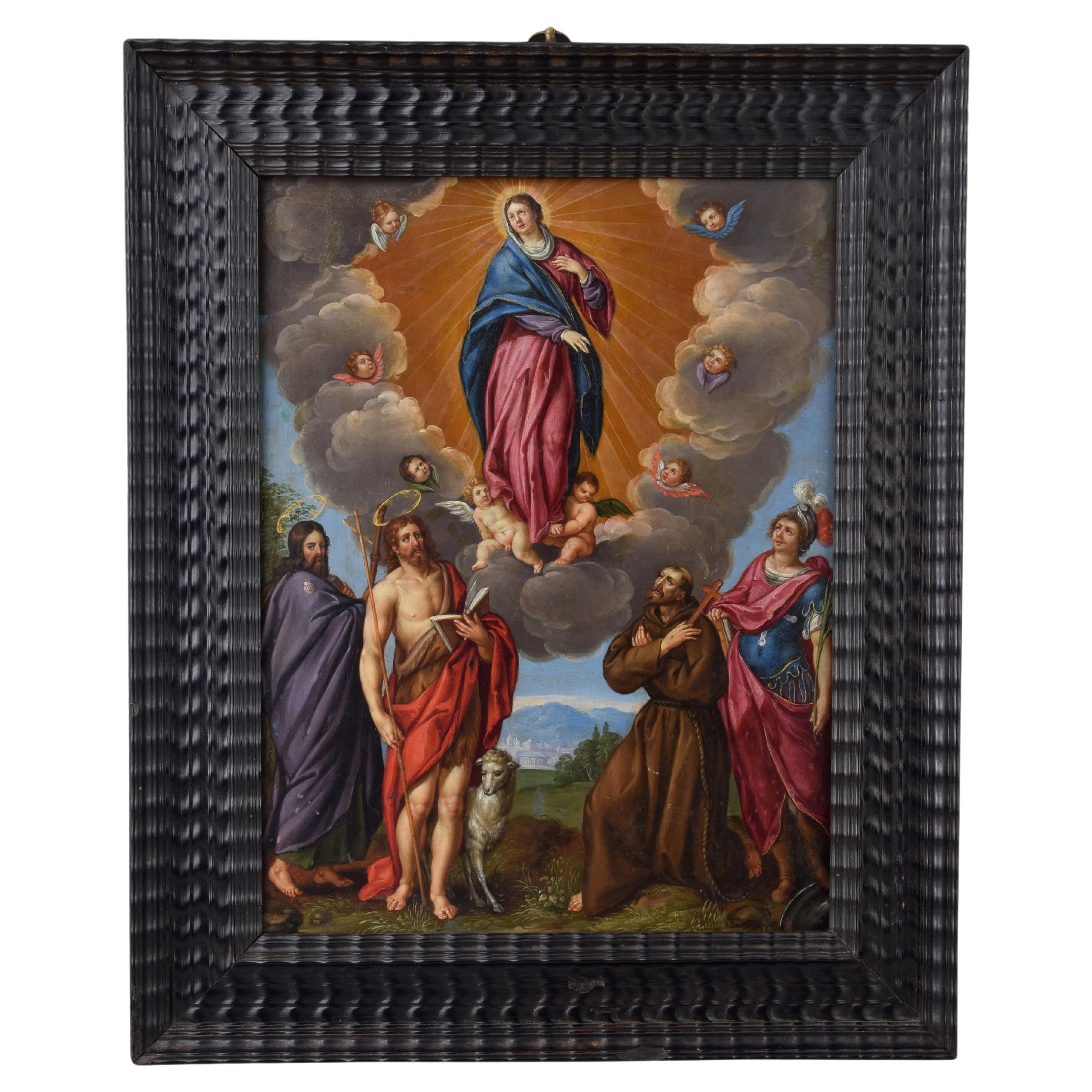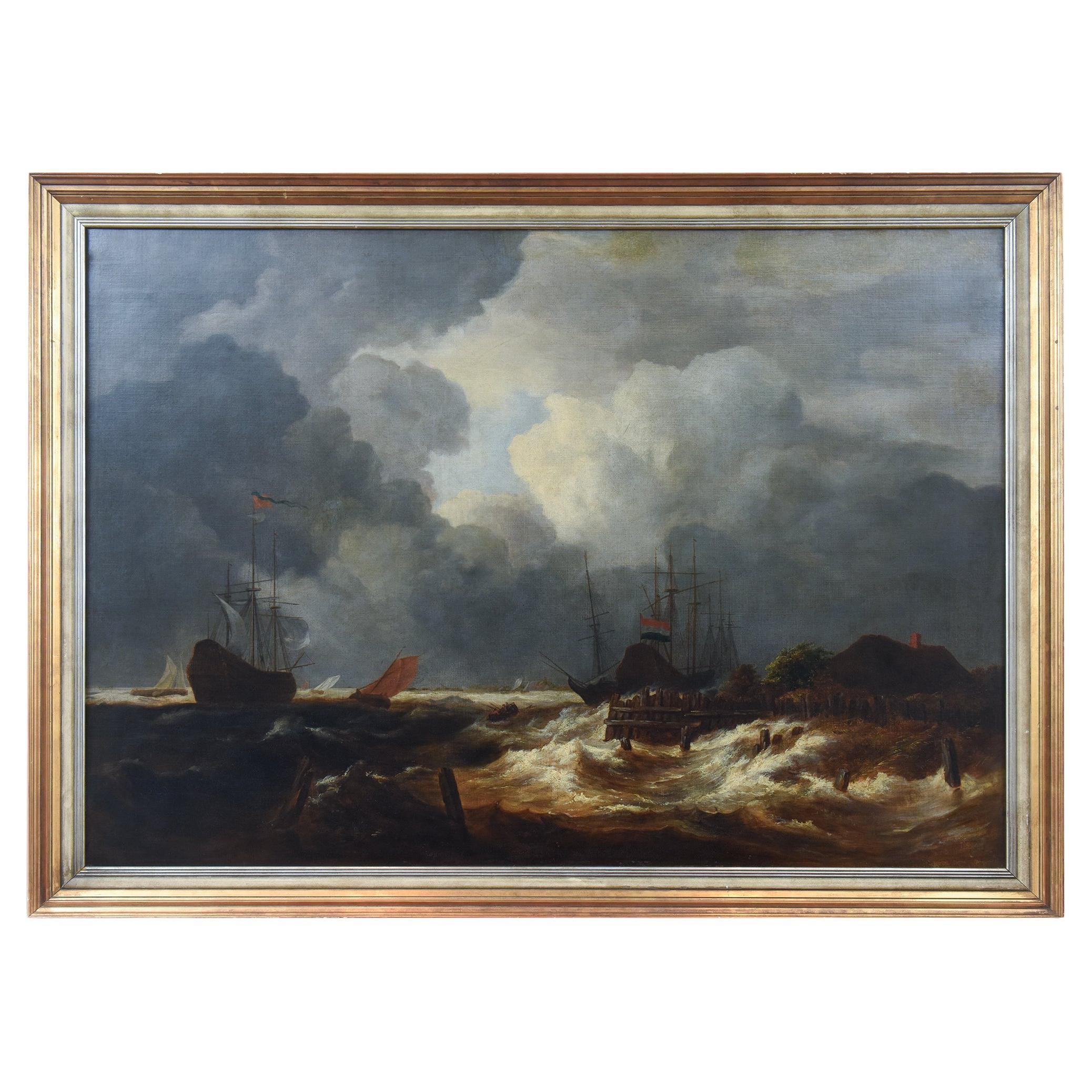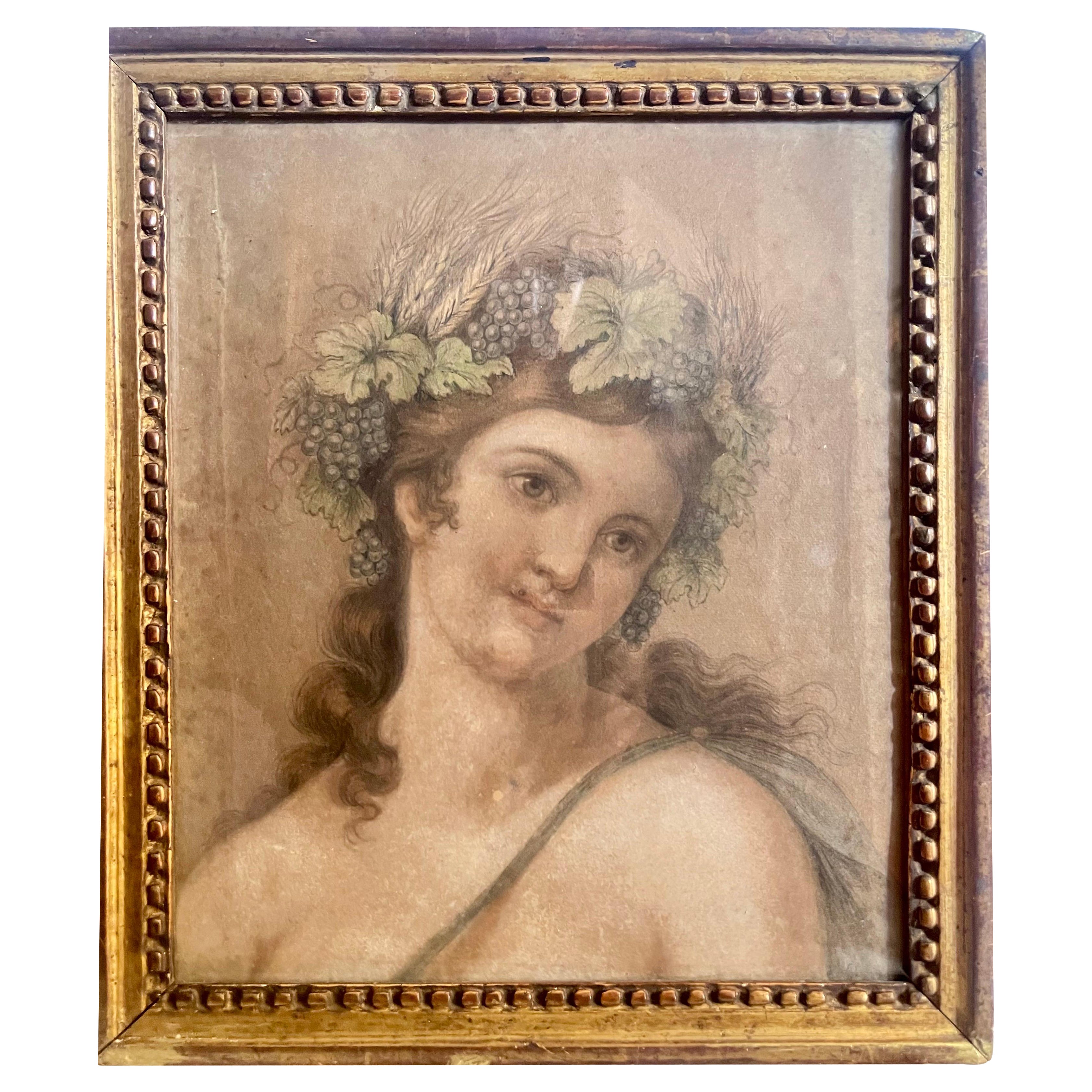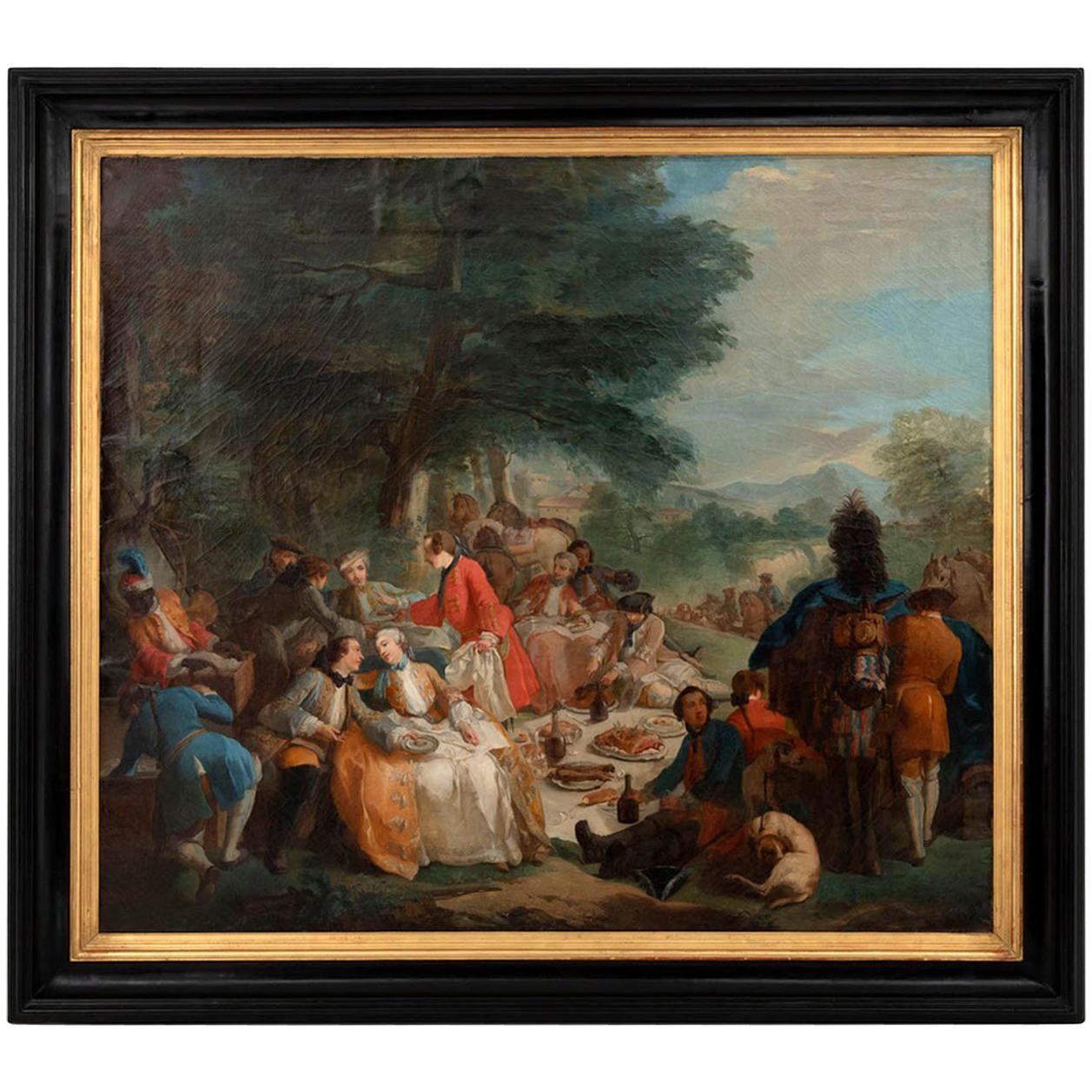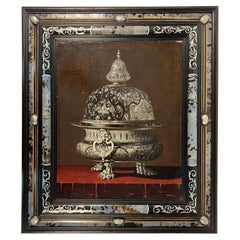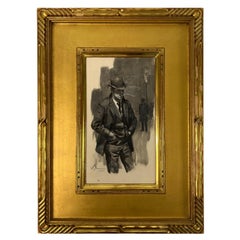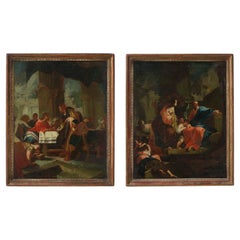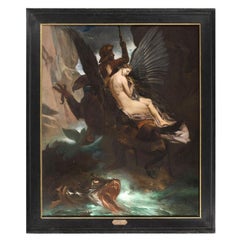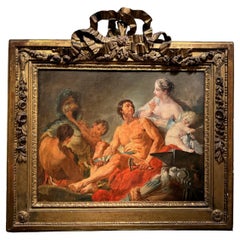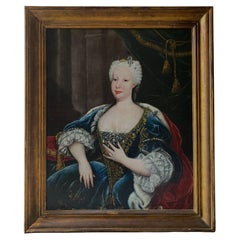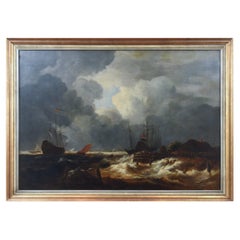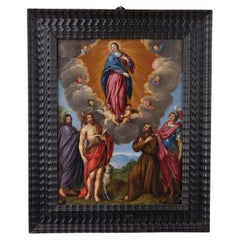Items Similar to Circle of Jacob van Loo (French, 1614-1670) - Venus at the Forge of Vulcan
Want more images or videos?
Request additional images or videos from the seller
1 of 7
Circle of Jacob van Loo (French, 1614-1670) - Venus at the Forge of Vulcan
About the Item
Our oil painting on canvas depicting the Venus at the Forge of Vulcan is attributed to the circle of Jacob van Loo (French, 1614-1670).
Literature: Jacob van Loo: 1614-1670; D. Mandrella; Paris; 2011; p 229; no. PE3.
Provenance: Arnold Seligman, Rey and Company, New York.
Arnold Seligmann, Rey & Co. was the New York City branch, established in 1921, of Arnold Seligmann & Cie. at 23, Place Vendôme, Paris, an art and antiquities dealership. The New York business was located at 11 East 52nd Street. The parent company, Jacques Seligmann & Cie, was established in 1880 on the rue des Mathurins in Paris by Jacques Seligmann (1858–1923). In 1900 a larger Galerie Seligmann was opened on the Place Vendôme, and Jacques Seligmann’s two brothers, Simon and Arnold Seligmann (1870–1932), joined the business as partners. In 1912, a family quarrel resulted in a lawsuit that split the company. Arnold Seligmann remained at the Place Vendôme location, reorganized under the name Arnold Seligmann & Cie.
- Dimensions:Height: 41 in (104.14 cm)Width: 34 in (86.36 cm)Depth: 1 in (2.54 cm)
- Materials and Techniques:
- Place of Origin:
- Period:
- Date of Manufacture:c1650
- Condition:Repaired: Canvas relined. Inpainting to the face of Vulcan and the raised wing of Cupid. Other areas of inpainting and craquelure. Wear consistent with age and use.
- Seller Location:New York, US
- Reference Number:1stDibs: LU6079238293322
About the Seller
No Reviews Yet
Vetted Professional Seller
Every seller passes strict standards for authenticity and reliability
Established in 1990
1stDibs seller since 2021
- ShippingRetrieving quote...Shipping from: New York, US
- Return Policy
Authenticity Guarantee
In the unlikely event there’s an issue with an item’s authenticity, contact us within 1 year for a full refund. DetailsMoney-Back Guarantee
If your item is not as described, is damaged in transit, or does not arrive, contact us within 7 days for a full refund. Details24-Hour Cancellation
You have a 24-hour grace period in which to reconsider your purchase, with no questions asked.Vetted Professional Sellers
Our world-class sellers must adhere to strict standards for service and quality, maintaining the integrity of our listings.Price-Match Guarantee
If you find that a seller listed the same item for a lower price elsewhere, we’ll match it.Trusted Global Delivery
Our best-in-class carrier network provides specialized shipping options worldwide, including custom delivery.More From This Seller
View All17th Century French Still Life Oil Painting by Baudouin Yvart
Located in New York, US
Our still life depicting a metal brazier on ledge is a rare painting by Baudouin Yvart (French, 1611-1690). Stretcher measures 15 1/4 by 19 inches.
It has an extraordinary ebonized sgraffito frame, 24 by 28 by 1 3/4 inches, with inlaid mother of pearl and pewter mounts.
Professionally relined and mounted on keyed stretcher.
Provenance: Private Collection, Paris, by 1974; Anonymous sale; Boisgirard et Associés, Paris, June 26, 1985, lot 26; Jocelyn Fielding Fine Art Ltd., London; Mr. and Mrs. John H. Gutfreund, CEO Salomon Brothers, New York.
Literature: Michel Faré, Le grand siecle de la nature morte...
Category
Antique 17th Century French Baroque Paintings
Materials
Wood, Paint
William Thomas Smedley Framed Watercolor of Gentleman Smoker
Located in New York, US
Our exceptional watercolor on paper by the American painter and illustrator, William Thomas Smedley (1858-1920), depicts a distinguished gentleman smoker standing beside a street lamp. Signed and dated 1894. Mounted in period giltwood frame originally glazed and now missing glass. We may install new plexiglass prior to shipment.
William Thomas Smedley was born in Chester County, Pennsylvania in 1858 and died in Bronxville, New York in 1920. He studied at the Pennsylvania Academy of the Fine Arts and later entered the Paris studio of Jean Paul Laurens. He submitted paintings regularly at prestigious exhibitions both in America and abroad during the late nineteenth and early twentieth centuries, including the Paris Salon and the Universal Exposition of 1900.
Around the turn of the century the village of Bronxville, located just north of Manhattan, became the center of a small suburban artists' colony. Otto Bacher settled there in 1896 and was followed a year later by Will Hicock Low. Smedley moved to Bronxville in 1898 and was soon joined by his fellow Pennsylvanian, Milne Ramsey.
Category
Antique Late 19th Century American Belle Époque Paintings
Materials
Paper
18th Century Franz Xavier Karl Palko (1724-1767) Oil Paintings Depicting Christ
Located in New York, US
Our extraordinary paintings, attributed to Franz Xavier Karl Palko (1724-1767) depict Christ in the house of Simon the Pharisee, and Christ and the children of Zebedee. Stretchers 1...
Category
Antique 18th Century German Paintings
Materials
Canvas
Roger Freeing Angelica by Adolphe Leofanti
Located in New York, US
Our painting by Adolphe Pierre Francois Leofanti (1838-1890) depicts Roger freeing Angelica. Period ebonized frame with gilt border measures 74 7/8 by 64 1/8 inches, 163 by 190 cm.
...
Category
Antique Late 19th Century French Romantic Paintings
Materials
Canvas
Baron Rothschild Group Portrait Oil Painting Circa 1890
Located in New York, US
Our charming painting, German School, circa 1890, depicts Sir Nathan Mayer Rothschild, 2nd Baronet (1840-1915), made Baron Rothschild in 1885, on the far right side, entertaining a g...
Category
Antique Late 19th Century German Paintings
Materials
Canvas
Medusa Portrait by Karel Eichhoff 'Austrian, 1899-?'
Located in New York, US
Our haunting and beautiful portrait on canvas of Medusa was painted by the Austrian-born artist Karel Eichhoff (1899-?). Stretcher measures 12.25 by 13.25 inches and the period giltwood frame measures 20 by 21 inches. Signed in lower right. With written authentication completed by the independent appraiser, Antonin Kleinwachter, Brno, Czech Republic, in 1976.
Provenance: Jay Waldmann, Southampton, New York.
The artist was born in Graz (Štýrský Hradec) in the south-eastern part of Austria. He studied at the Academy of Fine Arts in Prague from 1920 to 1924 under Professor Karl Krattner (1862-1926). He exhibited at Krasoumná Jednota, the provincial association formed in 1835 to support fine arts. Members included patrons from royalty and the state, including Emperor Francis Joseph...
Category
Early 20th Century Expressionist Paintings
Materials
Canvas
You May Also Like
Venus in the Forges of Vulcan', workshop of François Boucher? Late 18th century
By François Boucher
Located in PARIS, FR
Oil on canvas portraying the visit of Venus to the forges of Vulcan.
French school of the 2nd half of the 18th century.
Undoubtedly executed by a pupil of François BOUCHER; who died...
Category
Antique Late 18th Century French Rococo Paintings
Materials
Canvas
Portrait of D. Maria Bárbara De Bragança, Circle of Louis-Michel Van Loo
By H. van Loon
Located in Lisboa, PT
PORTRAIT OF D. MARIA BÁRBARA DE BRAGANÇA (1711-1758), QUEEN OF SPAIN
Circle of Louis-Michel van Loo (1707-1771)
Oil on canvas
Her Royal Highness, the Infanta Maria Barbara of Braganza (1711-1758) was the first-born child of King John V of Portugal (1689-1750) and his queen consort Maria Anna of Austria (1683-1754). Born in December 1711, she had the Convent Palace of Mafra built in her honour following a vow made by her royal father. Her status as Princess of Brazil, inherent to 18th century Portuguese presumptive heirs, would however be superseded once the queen gave birth to two male princes, D. Pedro (1712-1714) and D. José (1714-1777), preventing her from ascending to the throne.
Daughter of one of the most illustrious monarchs of his time, Maria Barbara was carefully educated to become a fond admirer of the arts, and of music in particular, having had the Italian composer Domenico Scarlatti (1685-1757) as her music teacher.
On the 10th January 1723 the young princess was betrothed to the Infante Ferdinand of Spain (1713-1759), eldest son of King Philip V (1683-1746). Six years later, on the 19th January, she entered her new country in a carefully choreographed ceremony that became known to history as the “Exchange of the Princesses”. This unique event took place on a specially built Bridge-Palace, a wooden, luxuriously decorated structure that included various modules and rooms, on both banks of the river Caia, the natural border between the town of Elvas in Portugal and of Badajoz in Spain. Simultaneously, on the same day that the Portuguese Infanta crossed the border to marry the Spanish Crown Prince, her new sister in law, the Infanta Mariana Victoria of Bourbon (1718-1781), her husband’s sister, crossed the same bridge in the opposite direction to marry Prince D. José, the Portuguese heir to the throne.
Once married, Maria Barbara would spend 17 years as Princess of Asturias, only becoming Queen of Spain at her husband’s accession following the death of Philip V in 1746. She is portrayed in the 1743 painting by Louis-Michel van Loo (1707-1771) now in the Prado Museum, in which Philip V had himself represented with all his close family.
The new Queen would take an important role at court eventually becoming the liaison between her husband and the King of Portugal, particularly throughout the negotiations for the Treaty of Madrid (1746-1750). Maintaining her interest in music, she patronized the Italian castrato singer Farinelli (1705-1782) while remaining close to her old master Scarlatti, having herself composed some sonatas for a large orchestra. She would also commission and fund the building of the Royal Salesians Monastery complex in central Madrid, where both her and Ferdinand VI are buried.
The portrait we are presenting for sale shows the Queen in half-length, turning left at three quarters. She is wearing a blue low-cut dress embroidered with flowers and foliage, over a lace cuffed white blouse, and an ermine cloak pined on the left-hand side by a diamond broach. The powdered hair style is held sideways by a seven diamond and black plume headdress and topped by a small gold and pearl crown. The right arm rests on a cushion while the left hand, at chest height, holds a miniature male portrait.
The Infanta’s features are analogous to the 1725 portrait by the painter Domenico Duprà (1689-1770), also in the Prado Museum collection. Further similarities can be found in another portrait by Louis-Michel van Loo, in which a seven diamond and black plume headdress is also present. In this work, the cushion supporting Maria Barbara’s right arm has also some obvious similarities to our painting. The same diamond headdress reappears in Van Loo’s above-mentioned portrait of Philip V’s family dated from 1743.
It is nevertheless in Lisbon’s Ajuda National Palace that it is possible to find an almost identical depiction of the Infanta holding a miniature portrait of her husband. In it, the future Ferdinand VI is portrayed facing right at three quarters and wearing a curly wig, suit of armour, the golden fleece insignia and a blue band, in a composition that closely resembles an 18th century Spanish school painting that appeared in the art market in January 2016.
Another detail common to various portraits of the Portuguese Infanta and Queen of Spain is the small gold and pearl crown on her head. In another Van Loo painting, also from the Prado Museum, in which Maria Barbara is portrayed as Queen, this crown is represented together with a headdress similar to the one previously described. Another two paintings by the same artist, at the Royal Academy of Saint Ferdinand, include the same ornament.
We must also refer the paintings by the artist Jean Ranc (1674-1735). In one, dating from 1729 (Prado Museum), the Infanta is depicted outdoors holding a flower bouquet and wearing a yellow silk dress with red cloak, and a set of diamond and ruby jewellery that includes a headdress similar to the one present in our portrait. Another work by the same artist, belonging to the Complutence University of Madrid, depicts the Infanta sumptuously dressed in identical colours to our painting and wearing an elaborate headdress and diadem.
These portraits, beyond their iconographical importance as contemporary records of the Infanta and Queen Maria Barbara, are also illustrative of 18th century fashion for jewelled head dressing. Often, flowers were combined with joyful adornments, composing almost theatrical displays that would reinforce the ostentatious nature of the image. The ornamental flowers and the chromatic character of the jewels would complement the luxury of the colourful dresses in blue, crimson, green or other silk shades, in compositions whose sole purpose was to highlight a royal sitter’s wealth and power, becoming an essential statement accessory within the strict court protocols and codes of conduct.
Circle of Louis-Michel van Loo (1707-1771)
Slowly but steadily, the resolute, tranquil and dignified attitude of Renaissance and Baroque portraiture becomes artificial and presumptuous. Mid 18th century society favours elusive expression and psychological deepness, albeit limited to the face, that, with emphasis on detail, on the rich colour palette and on changing costumes and landscapes, associated to the courtliness of gestures, creates a strongly artificial environment while maintaining a highly poetic intrinsic character.
Louis-Michel van Loo followed a dynasty of famous Dutch origin artists that had settled in France. Initially taught by his father, Jean-Baptiste von Loo (1684-1745), the younger van Loo studied in Turin and Rome and frequented the Paris Academy. In Rome he worked with his uncle Charles-André van Loo (1705-1765) and become a painter for the Turin Court. In 1737 he arrived in Spain being summoned by Philip V to succeed Jean Ranc as painter of the king’s chamber.
In Madrid, his work covers the numerous Court commissions and the Royal Saint Ferdinand Fine Arts Academy, of which he was a founding member and director for the Painting department in 1752. Is production at court consisted essentially of numerous portrait paintings, often Royal gifts...
Category
Antique 18th Century Spanish Baroque Paintings
Materials
Canvas
The Tempest (Reproduction of La Tempête by Jacob Isaakszoon van Ruisdael)
Located in North Miami, FL
This exquisite oil on canvas, dating to the early 19th century, is a faithful reproduction of The Tempest (La Tempête) by the renowned Dutch master Jacob Isaakszoon van Ruisdael (162...
Category
Antique 17th Century French Paintings
Materials
Canvas
Assumption of the Virgin Mary, Circle of Van De Kasteele, Frans
By Francesco da Castello
Located in Madrid, ES
Circle of VAN DE KASTEELE, Frans (Brussels, c. 1541 – Italy, 1621). "Virgin with angels and saints". Oil on copper. Curly frame in ebony.
Devotiona...
Category
Antique Early 17th Century Italian Baroque Paintings
Materials
Copper
Pastel 18th Century Venus of the Grape Harvest France
Located in palm beach, FL
Pastel 18th century Venus of the grape harvest France
Portrait of a young girl with an antique crown of bunches of grapes, vine leaves and ears of wheat.
Her light brown curly hair b...
Category
Antique 1770s French Paintings
Materials
Paper
Carle Van Loo, La Halte De Chasse Oil on Canvas, 19th Century French School
By Charles-André van Loo
Located in Saint-Ouen, FR
After Carle Van Loo, La halte de chasse (1737) (in english « The hunting halt »).
Large oil on canvas with a black lacquered frame with gilt molded hi...
Category
Antique 19th Century French Louis XV Paintings
Materials
Canvas
